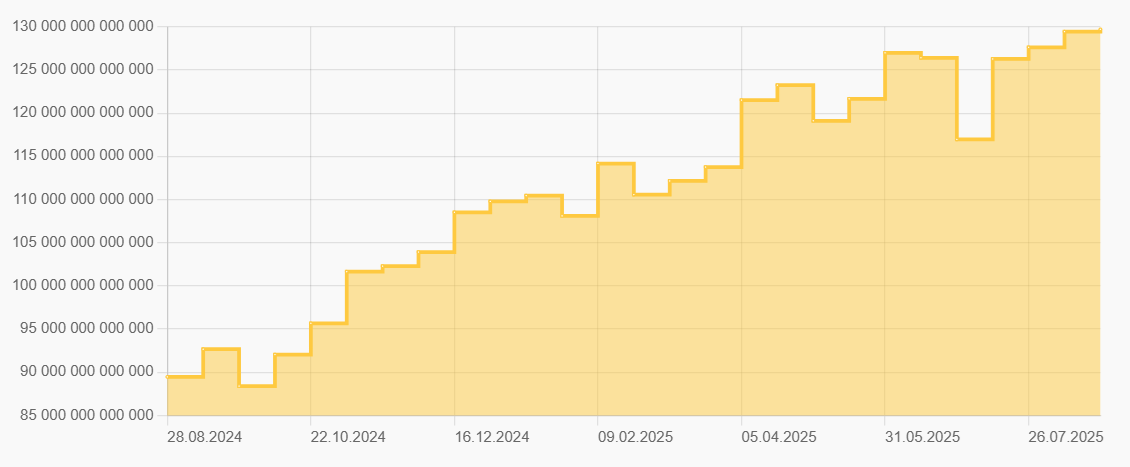
Over the past few days, the difficulty of mining Bitcoin has increased by 3.2%, reaching a new all-time high, according to data from analytical platforms. This recalculation reflects the increase in the network's computing power as more miners join the competition for block mining.
The current difficulty is around 129.7 trillion #hashes, highlighting the growing competition and strengthening security of the Bitcoin network. This growth is linked to an increase in the network's hash rate, which recently exceeded 847 EH/s, indicating significant investment in new equipment and expansion of mining operations.

The increase in mining difficulty has a dual impact on #miners. On the one hand, it strengthens the security of the network, making attacks on the blockchain more difficult as more computing resources are required to find a new block. On the other hand, increased difficulty reduces the profitability of mining, especially for smaller players using less efficient equipment.
After the #halving in April 2024, when the block reward was reduced, miners faced additional pressure due to increased operating costs, including electricity and equipment expenses. Some companies, such as #CleanSpark, are adapting by using #renewable energy sources and building up their bitcoin reserves, while less efficient miners may be forced out of the market.
This increase in difficulty also reflects a long-term upward trend in the Bitcoin ecosystem, despite temporary corrections. For example, in June 2025, the difficulty declined slightly from a peak of 126.9 trillion to 126.4 trillion, but the current jump confirms sustained interest in mining.
Experts note that such changes may stimulate innovation, including a shift to more energy-efficient #ASIC miners or the use of alternative strategies, such as mining other cryptocurrencies on compatible equipment. With the price of Bitcoin remaining above $90,000, mining is still profitable for large players, but further increases in difficulty could put more pressure on the market, especially if the price of the cryptocurrency begins to decline.




























